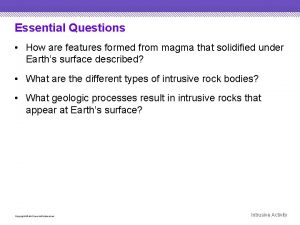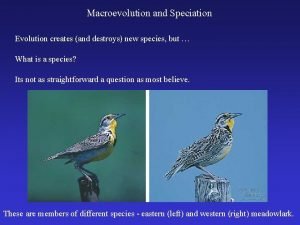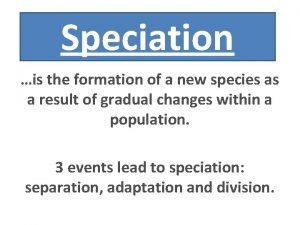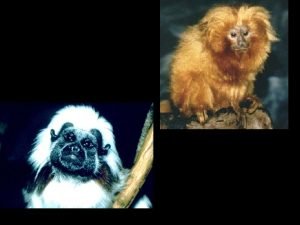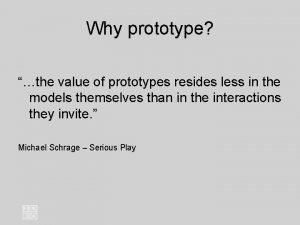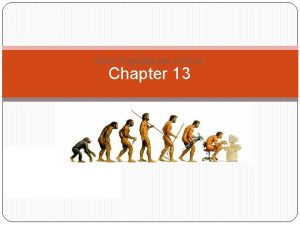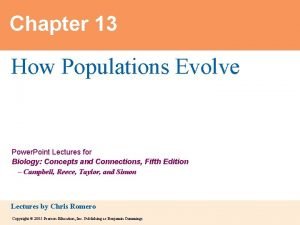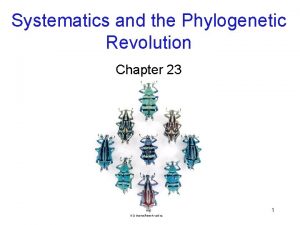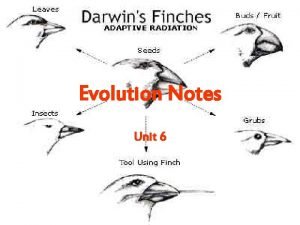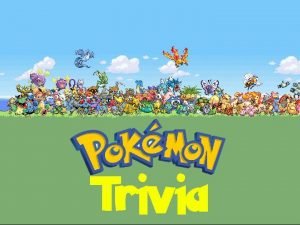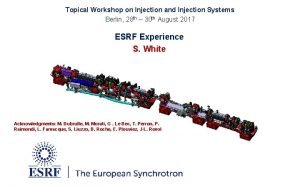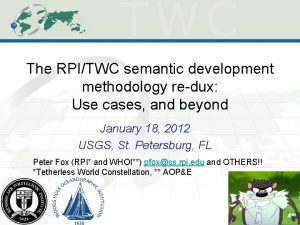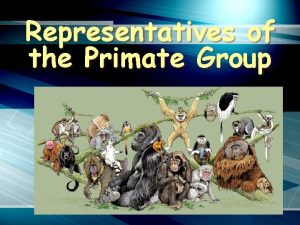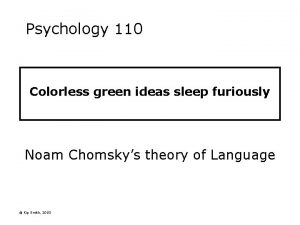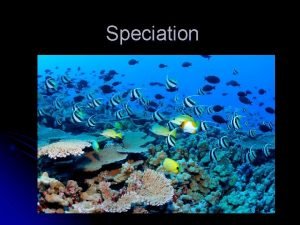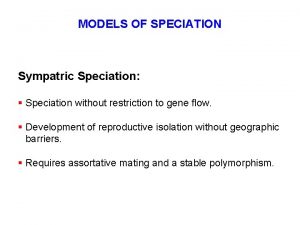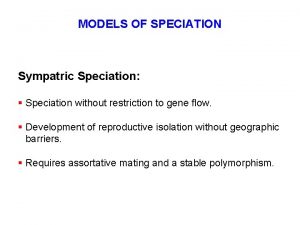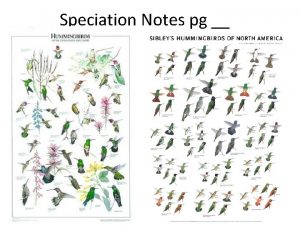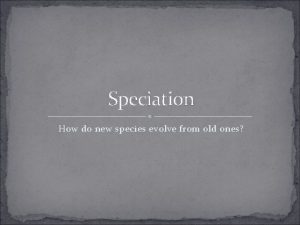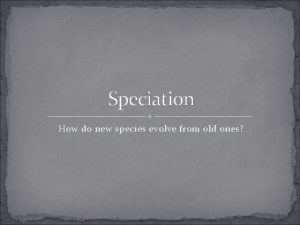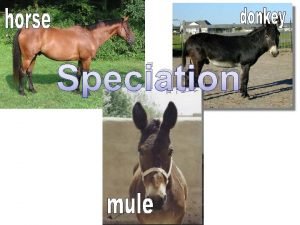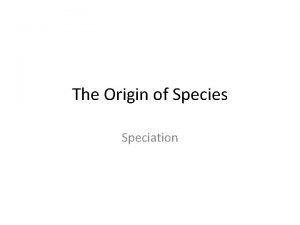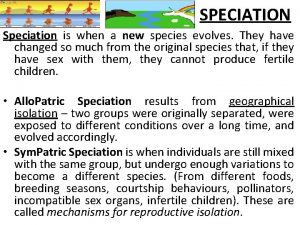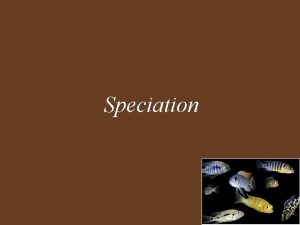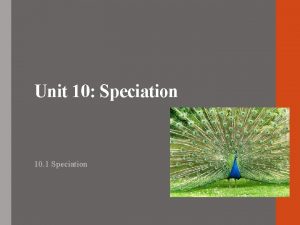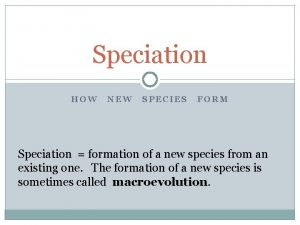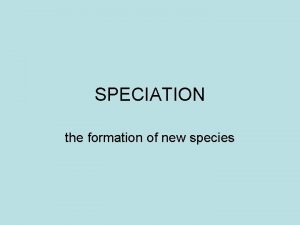Speciation How does a species evolve from preexisting




















- Slides: 20

Speciation How does a species evolve from preexisting species?

What is a Species? n Group of organisms that look alike, can interbreed, & mate to produce fertile offspring in nature

What do you get when you breed a donkey and a horse? A MULE!!! Does the mule fit the definition of a species?

Why does a MULE NOT fit the definition of a species? ? ü Can interbreed X Produce fertile offspring ü Do so in nature

What do get when you breed a tiger and a lion? A LIGER!!! Does the liger fit the definition of a species?

Why does a LIGER NOT fit the definition of a species? ? ü Can interbreed X Produce fertile offspring X Do so in nature

Speciation = evolution of a new species Happens b/c reproductive isolation n 3 ways n

1. Behavioral Isolation B/C different courtship rituals or other reproductive behaviors, like bird calls/songs n Ex. Eastern & Western Meadowlark n

2. Geographical Isolation When physical barriers (mountains, rivers, highways) separate populations n Ex: Grand Canyon squirrels, Darwin’s finches n

3. Temporal Isolation B/C pops reproduce @ different times n Ex. species of orchids & frogs n

Speciation can occur slowly or quickly 2 theories

Gradualism Species originate through a slow, steady change in adaptations n Proposed by Darwin n Supported by the fossil record n

Punctuated Equilibrium Speciation occurs quickly in rapid bursts, with long periods of stability n Caused by environmental changes (ex. 3 isolations) n Supported by fossil record n

Species will diversify when introduced to a new environment or become extinct. 2 Patterns of Macroevolution

1. Divergent Evolution (adaptive radiation) When species evolves into diverse new species n B/c different environments n Have homologous structures n Ex: polar vs. brown bear, Hawaiian honeycreeper n


2. Convergent Evolution n Distantly related (or unrelated) organisms evolve similar traits B/C similar environments Have analogous structures

Examples Dolphin, penguin, fish - Streamlined shape b/c need to move thru water efficiently n Bird, bat, butterfly n

Extinctions: n 1. Background extinction - normal extinction rate, species that go extinct simply because not all life can be sustained on Earth and some species simply cannot survive. 2. Mass extinction - widespread event that wipes out the majority (over 50%) of living plants and animals.

Coevolution - the process by which two or more interacting species evolve together, each changing as a result of changes in the other or others n Beneficial relationships • ex. Acacia plant and stinging ant n Competitive relationships • Crabs and murex snails • Evolutionary arms race newt & snake 2: 208: 26 min https: //www. youtube. com/watch? v=i. Tjk. SDa XF 7 s
 What are sills
What are sills Sympatric speciation vs allopatric speciation
Sympatric speciation vs allopatric speciation Speciation or the formation of new species is
Speciation or the formation of new species is Taxonomic species concept
Taxonomic species concept Keystone species in desert
Keystone species in desert Explore evolve validate prototype
Explore evolve validate prototype Gene pool
Gene pool Chapter 13 how populations evolve test
Chapter 13 how populations evolve test City and guilds functional skills practice tests
City and guilds functional skills practice tests Secureassess evolve
Secureassess evolve Explore evolve validate prototype
Explore evolve validate prototype Richard millwood
Richard millwood Chapter 13 how populations evolve
Chapter 13 how populations evolve Most complex characters evolve
Most complex characters evolve Evolve
Evolve Pokemon
Pokemon Evolve knowledge
Evolve knowledge Evolve berlinist
Evolve berlinist Evolve knowledge
Evolve knowledge Prehistoric lemur
Prehistoric lemur Overgeneralization
Overgeneralization
